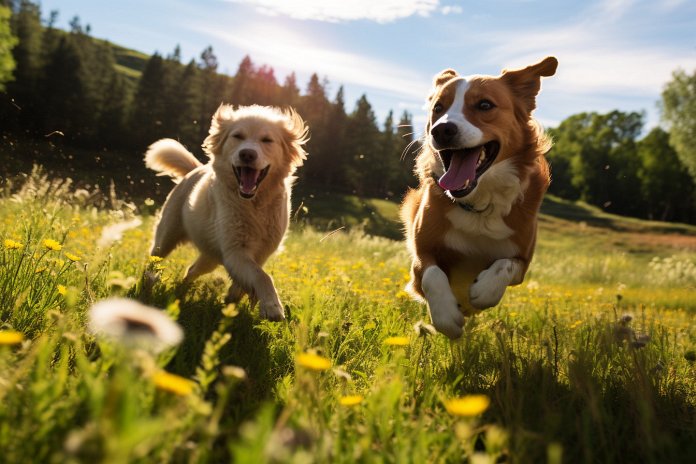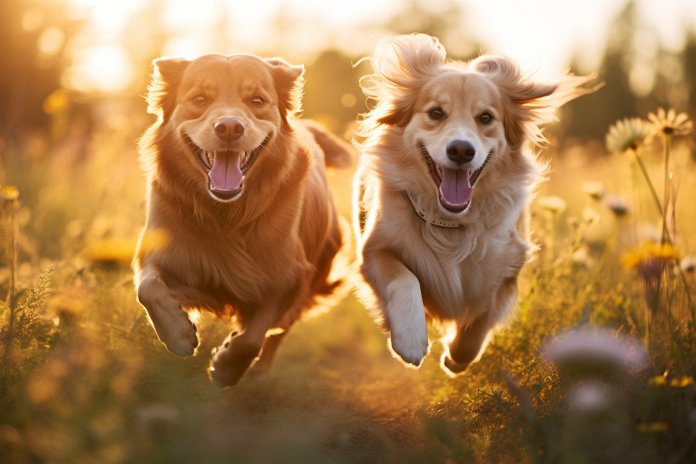
When you adopt a pup, they become a new family member and often adjust well to their new lives. However, many owners wonder if their dog remembers their actual family, especially their siblings. While this question hasn’t been fully studied, many owners believe that dogs recognize their littermates to some extent. The ability to remember siblings depends on factors such as age, upbringing, breed, and temperament.
Signs Your Dog Remembers Their Brother or Sister:
Whether or not a dog recognizes their sibling depends on how long they spent together, their breed, and their upbringing. If you happen to encounter one of your dog’s siblings or arrange a reunion, you can usually tell if they remember each other. During greetings with other dogs, your pup may exhibit playful behavior like bowing, rolling over, or having their tongue hanging out. If they recognize their sibling, they might show even more excitement than usual.
Body Language:
Visual cues that indicate your dog remembers their sibling include being alert, barking, wagging their tail, sniffing, raising their ears, licking, rolling, and play bowing.
Other Signs:
Other hints that your dog remembers their sibling include excited behavior, kisses and whimpers, rougher play, and staying close to their sibling.
The Science Behind Dogs Remembering Their Siblings:
Dogs have evolved from wolves and still exhibit some pack animal characteristics. During their early weeks of life, dogs primarily socialize with their siblings and mother, learning how to be a dog. The longer they spend with a particular group, the more likely they are to remember them. Research suggests that if dogs are together during the critical socialization phase, they are likely to remember their siblings and parents. Additionally, dogs have a strong sense of smell and can recognize similar scents.
Training Your Dog to Smell Their Siblings:
There is no specific way to train a dog to recognize their siblings, but owners can facilitate reunions. Littermate pups that see each other regularly, regardless of recognizing the familial connection, will adapt to each other’s presence. Spending more time with blood relatives can help dogs become more comfortable around each other.
Conclusion:
While there is no definitive answer, many owners believe that dogs remember their siblings to some extent. Recognizing littermates depends on various factors. If you want your dog to have a relationship with their sibling, allowing them to spend more time together is key. Ultimately, you and your family are all your dog needs, but additional time with siblings can enhance their socialization.
“It stands to reason that the longer they spend with a particular group, the more likely they are to remember the lessons they learn and individual pack members.”

Tips & Things to Know
1️⃣ Pay attention to your dog’s body language: If you happen to come across your dog’s siblings or set up a reunion, observe how your dog reacts. Signs such as sniffing, licking, raised ears, wagging tail, and play bowing may indicate recognition and excitement.
2️⃣ Understand the importance of socialization: Dogs are pack animals, and their early interactions, especially with their littermates, play a crucial role in shaping their behavior. Dogs are more likely to remember their siblings if they spent a significant amount of time together during the critical socialization phase.
3️⃣ Allow opportunities for reunions: While you cannot train your dog to recognize their siblings, spending time with them can help foster a bond. Regular interactions with littermates, even if they don’t recognize each other, can still contribute to a positive relationship between the dogs.
Frequently Asked Questions, Answered ✅
1. Do dogs remember their siblings after being adopted?
– While it hasn’t been fully studied, many owners believe that dogs do recognize their siblings to some extent and react differently to them compared to other dogs.
2. How can you tell if your dog remembers their sibling?
– If your dog recognizes their sibling, you may see signs such as increased sniffing, licking, and rough play. They may also exhibit excited behavior, stay close to their sibling, and give kisses and whimpers.
3. What are some visual cues that indicate a dog remembers their sibling?
– Alertness, barking, a wagging tail, sniffing, raised ears, licking, a hanging tongue, rolling, and play bowing are all visual cues that suggest a dog remembers their sibling.
4. Why do dogs remember their siblings?
– Dogs are pack animals, and during their critical socialization phase, which typically lasts from week three to week 16, they learn a lot from their siblings and parents. Research suggests that dogs are likely to remember their siblings and parents if they spent this phase together.
5. Can you train your dog to recognize their sibling?
– While you can’t train your dog to specifically recognize their sibling, spending more time with their blood relatives can help them develop a comfortable relationship. Littermate pups who see each other regularly, even if they don’t recognize the familial connection, can adapt to each other’s presence and see each other as “brothers” or “sisters”.